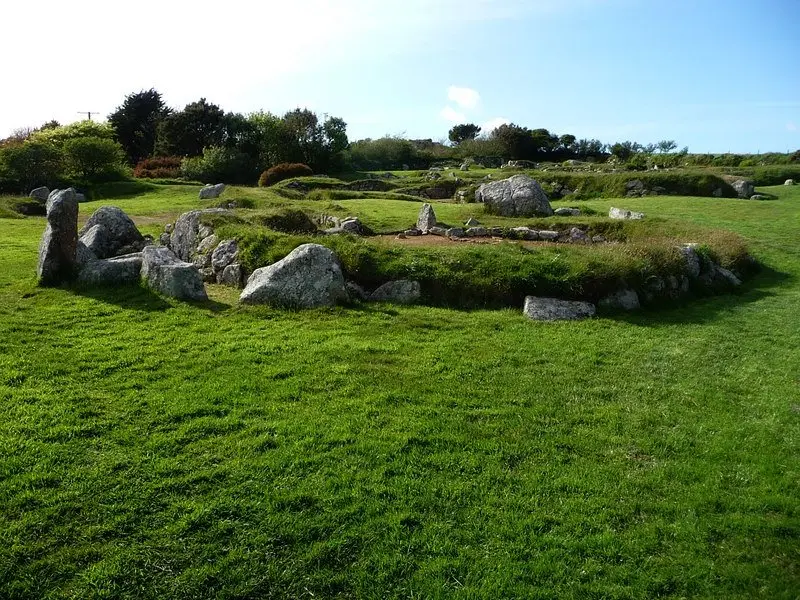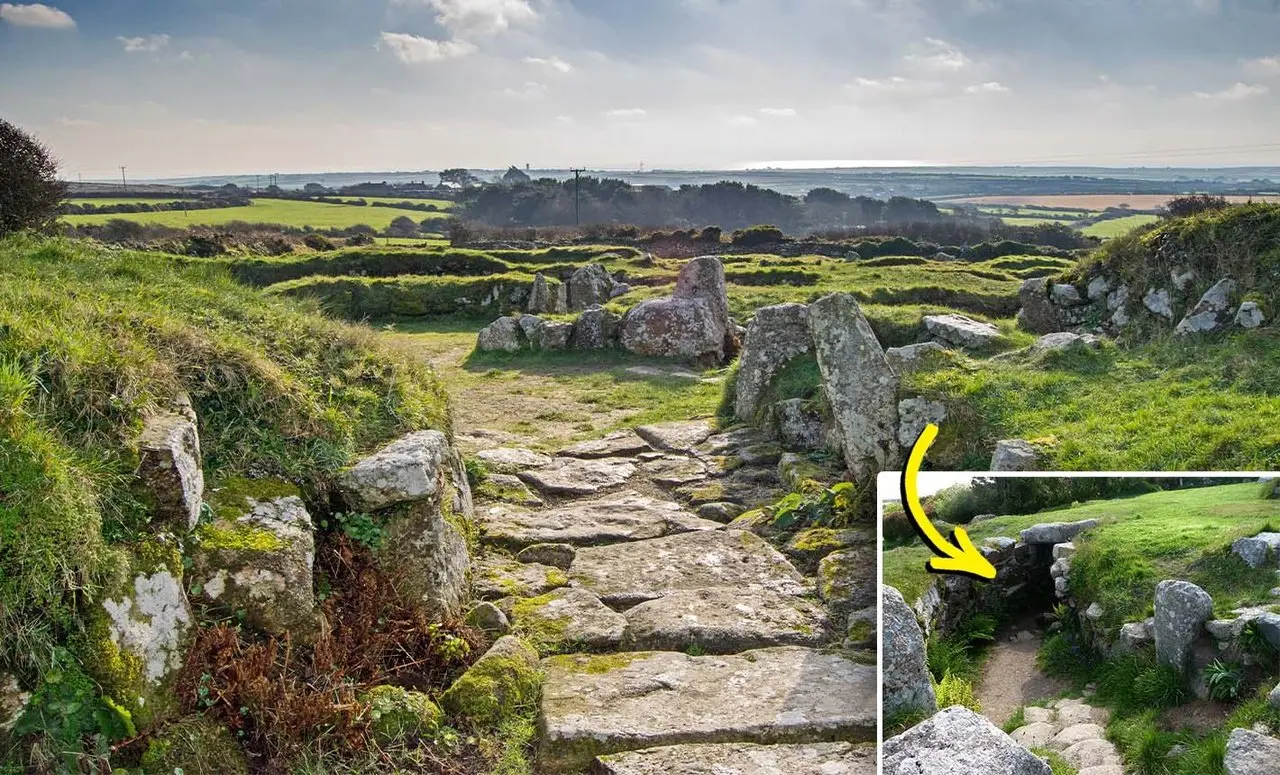Tucked into the windswept hills of West Penwith, near the quiet village of Sancreed in Cornwall, Carn Euny is a place where the past rises gently from the earth. This remarkably well-preserved ancient village, inhabited from the Iron Age through the late Roman period, offers a vivid glimpse into early life in Britain. Stone foundations of oval and courtyard houses still trace the rhythms of daily life over 1,500 years ago—homes once filled with warmth, work, and whispers of community. Surrounded by traces of cultivated fields and overlooked by the nearby Iron Age hillfort of Caer Bran, Carn Euny feels like a place paused in time. Yet, its true mystery lies not in what stands above ground—but in what lies beneath.

Beneath the soft grass and ancient stones winds a tunnel that has captivated archaeologists and curious visitors for generations. Known as a fogou—a word rooted in the Cornish language meaning “cave”—this subterranean passage is the most iconic feature of Carn Euny, and one of the finest surviving examples in Cornwall. Stretching more than 20 metres (over 65 feet), the fogou snakes beneath the surface in a slightly curving form, roofed with enormous stone slabs and lined with timeworn stonework. At its western end, a side passage leads to a corbelled circular chamber once capped by a now-collapsed domed roof. From here, a small tunnel, known as a “creep,” rises back toward the light of day—an architectural feature whose purpose, like so much else about the fogou, remains tantalisingly unclear.


Unlike any other structure found outside the far west of Cornwall, fogous are unique to this rugged region and closely tied to Iron Age settlements. Yet their function continues to be debated. Were they cold storage cellars for food? Secret hideaways during conflict? Sacred places of ritual? The fogou at Carn Euny, with its niche carved into the wall of the underground chamber, seems to invite interpretations beyond the practical. Some archaeologists have proposed spiritual or ceremonial uses, perhaps linked to an earth-based religion or seasonal rites tied to fertility, death, and rebirth. Others caution that no single answer has yet emerged. The ambiguity is part of its allure.
The very construction of the fogou is a marvel. Built using the “cut and cover” technique, the underground chamber was first dug into the hillside, then lined and roofed with massive slabs of stone. Despite the centuries and Cornwall’s wet climate, the structure has survived astonishingly intact, aided by a period when it was deliberately filled in—an act that, whether accidental or intentional, preserved it for future rediscovery.


Indeed, it wasn’t until the 1840s that the fogou was first found by tin miners, prompting early excavations by antiquarian William Copeland Borlase in the 1860s. Later, from the 1960s to the early 1970s, modern archaeologists revealed the full breadth of the site: nine hut foundations, postholes from timber roundhouses, and evidence of agricultural life including querns, spindle whorls, and tools used to process crops and fibers. The villagers here farmed around 40 acres of land, growing oats, rye, and barley, and raising cattle, sheep, and goats. They may also have engaged in the ancient Cornish trade of tin dealing—a precious resource in the Iron Age and Roman world alike.


Today, Carn Euny is open to the public, free to explore, and managed by the Cornwall Heritage Trust. Walking through the village, one can trace the walls of courtyard houses unique to this region—thick-walled homes built around open-air central spaces used for work and life. But nothing compares to descending into the fogou. There, in the cool dimness, surrounded by stone and silence, time folds inward. You can feel the weight of history in the damp air, imagine the flicker of torchlight, and hear—if you listen closely—the quiet echo of footsteps long since passed.
Carn Euny’s fogou is more than a tunnel. It is a question carved in stone. A relic of a world that has not quite let go of its secrets. For those willing to crouch down and enter its shadows, it offers something rare: the chance to wonder.



Leave a Comment